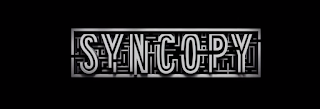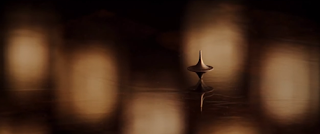In the first few seconds of Inception, three high-contrast producer logos are presented with a tense non-diegetic music score which immediately unsettles the audience. Dark tones have been used to give the introduction an eerie atmosphere.
The music cuts out entirely in this establishing shot; sound effects of crashing waves replace the score. This is effective because, in contrast with the opening score, it becomes a normality scene which will juxtapose with upcoming scenes of high tension and drama. The establishing shot gives the audience an understanding of the location in which the first scene takes place. While this is not essential, it can be useful for slowly revealing narrative events to the audience.
In this shot, the protagonist is introduced through an extreme-close-up. We are unaware at this moment whether he is conscious. A dappled effect on the lens - caused by water droplets - and chiaroscuro have been used effectively in this shot to enhance the shadowing on the face of the character which keeps the audience questioning his significance and identity. A fast editing pace with jump cuts throws us around the scene which will put the audience on edge.
In the shot above, a young boy is seen playing in the sand. The shot has been blurred which implies that it is a POV shot from the protagonist's eyes. A fast editing pace builds up tension alongside jump cuts from his face to this shot of the children playing. Sound effects have been used to introduce the children playing in the sand. The camera is handheld which adds movement to the shot which connotes the unsteady psychology of the protagonist.
The audience are lead to question whether or not the children are actually there or just figments of his imagination, because of the rapid cutting between the close-ups of his facial expression and the scene with the children making sand castles. Close-ups are important for revealing a character's reactions to the audience. The fast-paced cutting and repetition also suggest that the children have some kind of sentimentality to the protagonist - perhaps they are his own children. This makes the audience become engaged with the narrative as they try to understand the relationship between the character and the children.
In the shot below, a gun is used by a character, who at this moment we do not know, to see if the protagonist is conscious. Using a gun as a prop is likely to alarm the audience and give a sense of authority and power to its owner. Low-key lighting is also used in this shot to convey an eerie, dark atmosphere. The shot remains on screen for no more than two seconds before cutting to a low angle shot of the man holding the gun.
This low angle shot gives a greater sense power to the holder of the gun. This is because low angle shots convey power, importance and strength by making things appear greater in size. A cinematic filter has been applied to the shot which adds contrast while toning down the blue in the sky. Removing any vivid blue will ensure the shots convey a sense of hostility rather than a light-hearted series of beach shots. A sense of danger and hostility is typical among thrillers and helps to engage and audience by putting them on-edge.
In the POV shot above, the audience get the impression that they are seeing things through the new character's eyes. We can now see that the beach is in fact empty and the children playing must have been part of the protagonist's imagination. This makes the audience question what has happened to the children and why they are on his mind. The beach and temple are the brightest points in the shot which draws the audience's attention to them individually.
The shot above is another establishing shot used to introduce the next scene. Low-key lighting is used heavily in these shots with a chiaroscuro effect which conveys a sense of danger and sinisterness to the audience.
The two shots above and below are close-ups of the spinning top which makes the audience question its significance and importance to the narrative. Darkened shadows and the exaggerated orange/yellow colour manipulation give the scene its sinister feel.















No comments:
Post a Comment